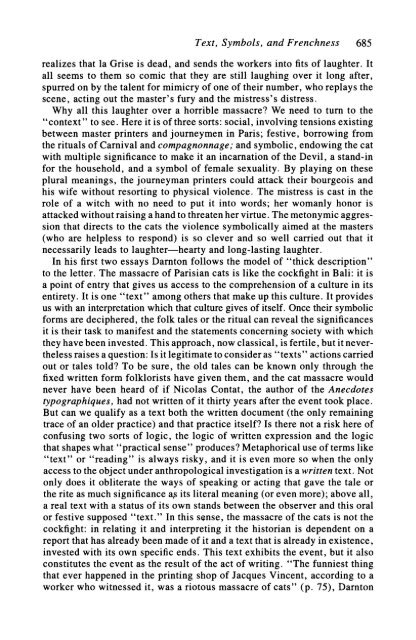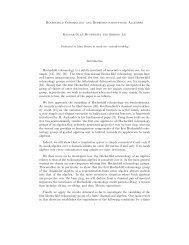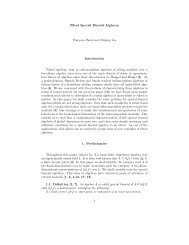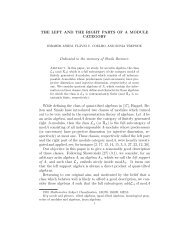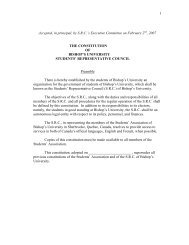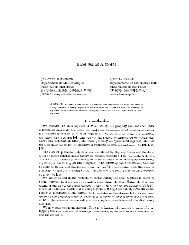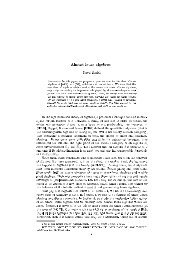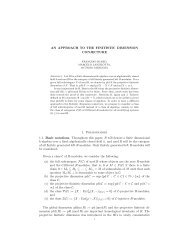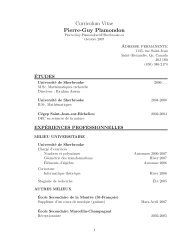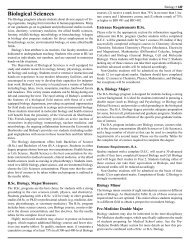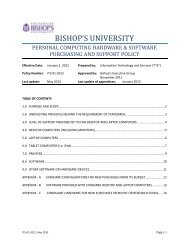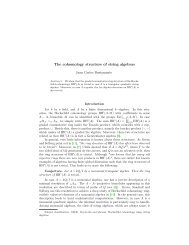Review: Text, Symbols, and Frenchness Roger Chartier The Journal ...
Review: Text, Symbols, and Frenchness Roger Chartier The Journal ...
Review: Text, Symbols, and Frenchness Roger Chartier The Journal ...
You also want an ePaper? Increase the reach of your titles
YUMPU automatically turns print PDFs into web optimized ePapers that Google loves.
<strong>Text</strong>, <strong>Symbols</strong>, <strong>and</strong> <strong>Frenchness</strong> 685<br />
realizes that la Grise is dead, <strong>and</strong> sends the workers into fits of laughter. It<br />
all seems to them so comic that they are still laughing over it long after,<br />
spurred on by the talent for mimicry of one of their number, who replays the<br />
scene, acting out the master's fury <strong>and</strong> the mistress's distress.<br />
Why all this laughter over a horrible massacre? We need to turn to the<br />
"context" to see. Here it is of three sorts: social, involving tensions existing<br />
between master printers <strong>and</strong> journeymen in Paris; festive, borrowing from<br />
the rituals of Carnival <strong>and</strong> compagnonnage; <strong>and</strong> symbolic, endowing the cat<br />
with multiple significance to make it an incarnation of the Devil, a st<strong>and</strong>-in<br />
for the household, <strong>and</strong> a symbol of female sexuality. By playing on these<br />
plural meanings, the journeyman printers could attack their bourgeois <strong>and</strong><br />
his wife without resorting to physical violence. <strong>The</strong> mistress is cast in the<br />
role of a witch with no need to put it into words; her womanly honor is<br />
attacked without raising a h<strong>and</strong> to threaten her virtue. <strong>The</strong> metonymic aggression<br />
that directs to the cats the violence symbolically aimed at the masters<br />
(who are helpless to respond) is so clever <strong>and</strong> so well carried out that it<br />
necessarily leads to laughter-hearty <strong>and</strong> long-lasting laughter.<br />
In his first two essays Darnton follows the model of "thick description"<br />
to the letter. <strong>The</strong> massacre of Parisian cats is like the cockfight in Bali: it is<br />
a point of entry that gives us access to the comprehension of a culture in its<br />
entirety. It is one "text" among others that make up this culture. It provides<br />
us with an interpretation which that culture gives of itself. Once their symbolic<br />
forms are deciphered, the folk tales or the ritual can reveal the significances<br />
it is their task to manifest <strong>and</strong> the statements concerning society with which<br />
they have been invested. This approach, now classical, is fertile, but it nevertheless<br />
raises a question: Is it legitimate to consider as "texts" actions carried<br />
out or tales told? To be sure, the old tales can be known only through !he<br />
fixed written form folklorists have given them, <strong>and</strong> the cat massacre would<br />
never have been heard of if Nicolas Contat, the author of the Anecdotes<br />
typographiques, had not written of it thirty years after the event took place.<br />
But can we qualify as a text both the written document (the only remaining<br />
trace of an older practice) <strong>and</strong> that practice itself? Is there not a risk here of<br />
confusing two sorts of logic, the logic of written expression <strong>and</strong> the logic<br />
that shapes what "practical sense" produces? Metaphorical use of terms like<br />
"text" or "reading" is always risky, <strong>and</strong> it is even more so when the only<br />
access to the object under anthropological investigation is a written text. Not<br />
only does it obliterate the ways of speaking or acting that gave the tale or<br />
the rite as much significance as its literal meaning (or even more); above all,<br />
a real text with a status of its own st<strong>and</strong>s between the observer <strong>and</strong> this oral<br />
or festive supposed "text." In this sense, the massacre of the cats is not the<br />
cockfight: in relating it <strong>and</strong> interpreting it the historian is dependent on a<br />
report that has already been made of it <strong>and</strong> a text that is already in existence,<br />
invested with its own specific ends. This text exhibits the event, but it also<br />
constitutes the event as the result of the act of writing. "<strong>The</strong> funniest thing<br />
that ever happened in the printing shop of Jacques Vincent, according to a<br />
worker who witnessed it, was a riotous massacre of cats" (p. 75), Darnton


